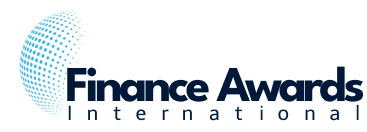Ever poured money into marketing campaigns, hoping for a flood of new customers, only to feel like you’re filling a leaky bucket? You’re not alone. In the wild marketplace, attracting buyers is essential, but how much it costs you to win each one over is the make-or-break detail. That’s where understanding what is CAC becomes your secret weapon. It’s not just another acronym; it’s the financial compass guiding your business towards sustainable profit. So, let’s demystify this crucial metric and uncover why it deserves a prime spot on your leadership dashboard.
Why Knowing What Is CAC Matters More Than Ever
Think back to simpler times. Maybe you ran local ads, shook hands at events, and customers seemed to find you. Today? The digital landscape is noisy, competitive, and expensive. Consumers are savvier, channels are more complex, and every dollar spent needs to justify itself. Simply put, growth at any cost is a recipe for burnout or bankruptcy.
Knowing what is CAC gives you laser focus. It moves you beyond vanity metrics like “likes” or “impressions” and forces you to ask the critical question: “Is the juice worth the squeeze?” Are you spending $500 on ads to acquire a customer whose first purchase is only $50? That math doesn’t add up, and ignoring it is like driving with your eyes closed – eventually, you crash.
So, What Exactly Is CAC? Breaking Down the Definition
Let’s cut through the jargon. Customer Acquisition Cost is precisely what it sounds like: the total average cost your business incurs to acquire one new paying customer.
Think of it like this: Imagine you own a lemonade stand. You spend money on:
- Lemons and sugar (Product Cost – not usually in CAC)
- A cute sign (Marketing Materials)
- Shouting about your stand to passersby (Advertising/Marketing Effort)
- Paying your helpful friend for an hour (Sales/Salaries)
The money spent specifically on getting people to notice and buy your lemonade (the sign, the shouting, paying your friend) – that’s your acquisition cost. Divide that total spend by the number of new customers who actually bought lemonade because of those efforts, and voila! You have your stand’s CAC.
Calculating Your CAC
The basic formula for understanding what is CAC mathematically is beautifully simple:
CAC = Total Sales & Marketing Costs / Number of New Customers Acquired
But the devil is in the details! What exactly goes into “Total Sales & Marketing Costs”? To get a true picture, you need to cast a wide net over a specific period (e.g., a month, a quarter, a year):
- Advertising Spend: Every dime on Google Ads, Facebook/Instagram Ads, LinkedIn, TikTok, display networks, billboards, radio spots – you name it.
- Marketing Team Costs: Salaries, benefits, commissions, and overhead for your marketing team (pro-rated for the time period).
- Sales Team Costs: Salaries, benefits, commissions, bonuses, and overhead for your sales team (again, pro-rated).
- Marketing Technology (MarTech): Costs for your CRM (like Salesforce, HubSpot), email marketing tools, SEO software, analytics platforms, design tools – anything directly used for acquisition.
- Content Creation: Costs for producing blogs, videos, podcasts, webinars, infographics aimed at acquisition.
- Events & Sponsorships: Costs for trade shows, conferences, sponsorships where the primary goal is lead generation/customer acquisition.
- Agency & Freelancer Fees: Payments to external agencies or freelancers handling your marketing or sales efforts.
Crucially: Do NOT include costs for:
- Product development
- General overhead (like office rent for non-sales/marketing staff)
- Customer support costs (that’s post-acquisition)
- Manufacturing or cost of goods sold (COGS)
Once you have your total spend for the period, divide it by the number of new paying customers you actually acquired through those efforts in that same period. This gives you your average customer acquisition cost.
Why Knowing What Is CAC Is Your Business Superpower

Okay, you’ve crunched the numbers. You know your CAC is, say, $150. So what? Why is this figure so critical? Here’s the real power behind understanding what is CAC:
- Profitability Radar: CAC is the ultimate litmus test for your growth strategy. If your CAC is higher than the profit you make from a customer (especially over time), you’re losing money on every sale. That’s unsustainable. Knowing your customer acquisition cost tells you instantly if your acquisition engine is fundamentally profitable.
- LTV: CAC’s Perfect Partner (The Golden Ratio): CAC doesn’t live in a vacuum. Its true power shines when paired with Customer Lifetime Value (LTV or CLV). LTV estimates the total net profit you expect to earn from a customer over their entire relationship with you.
- The Magic Ratio (LTV:CAC): The holy grail is an LTV:CAC ratio of 3:1 or higher. This means a customer is worth at least three times what it cost to acquire them. This ratio provides the buffer needed to cover other business costs (product, support, overhead) and generate healthy profit. A ratio of 1:1 means you’re breaking even on acquisition – no room for profit! Less than 1:1? You’re actively burning cash.
- Channel Efficiency Detective: Not all marketing channels are created equal. Calculating CAC by channel (e.g., Facebook Ads CAC vs. Google Search Ads CAC vs. Organic Search CAC) reveals where your money is working hardest. You can ruthlessly cut underperforming channels and double down on the winners. This is how you optimize your marketing spend for maximum return.
- Sustainable Growth Engine: Want to scale? Understanding what is CAC and how to optimize it is fundamental. A low, efficient customer acquisition cost means you can reinvest more revenue into acquiring even more customers profitably. A high CAC acts as a brake on growth – you simply can’t afford to scale without going broke.
- Investor & Stakeholder Confidence: Investors live and breathe metrics like CAC and LTV:CAC. Demonstrating a healthy, optimized customer acquisition cost shows you have a scalable, efficient business model. It builds immense trust and confidence in your leadership and strategy.
Beyond the Basics: CAC in Different Business Models
While the core principle remains, how you view what is CAC can have nuances depending on your model:
- E-commerce: Focuses heavily on direct ad spend (Google Shopping, Facebook/Instagram) and campaign performance. Average Order Value (AOV) plays a big role alongside LTV.
- SaaS (Software-as-a-Service): CAC is critical due to subscription models. The focus is on recovering customer acquisition cost within a reasonable timeframe (often measured by CAC Payback Period – how many months it takes for a customer’s revenue to cover the CAC). High upfront CAC needs long customer lifetimes (high LTV).
- Enterprise Sales: CAC can be very high due to long sales cycles, expensive sales teams, and complex deals. This makes a strong LTV:CAC ratio even more crucial for justifying the initial investment.
How to Optimize Your Customer Acquisition Cost
Knowing what is CAC is step one. The real magic lies in improving it. Here’s how to make your acquisition engine hum efficiently:
- Sharpen Your Targeting: Stop spraying and praying! Use data to define your ideal customer profile (ICP) with laser precision. Target your marketing and sales efforts only to those most likely to convert and become valuable customers. This reduces wasted ad spend and sales effort. Think sniper rifle, not shotgun.
- Boost Conversion Rates (CVR): This is often the biggest lever. Even small improvements here drastically lower your CAC. How?
- Landing Page Optimization: Make it ridiculously easy and compelling to take the desired action (sign up, request demo, buy).
- Frictionless Checkout: Abandoned carts kill CAC. Simplify the buying process.
- Stronger Value Propositions: Communicate clearly why someone should choose you, instantly.
- Sales Process Refinement: Equip your sales team, shorten cycles, improve close rates.
- Increase Average Order Value (AOV): While not directly lowering CAC, getting more revenue per acquired customer improves your LTV:CAC ratio instantly. Tactics include upselling, cross-selling, bundling, and tiered pricing.
- Supercharge Customer Retention (Lift LTV): Keeping customers longer directly increases their LTV, improving the LTV:CAC ratio. Implement stellar onboarding, exceptional customer support, loyalty programs, and continuously deliver value. Reducing churn is a powerful CAC optimizer.
- Leverage Organic & Low-Cost Channels: Don’t underestimate the power of SEO, content marketing, social media (organic), referrals, and PR. These channels often have a much lower (or even near-zero) customer acquisition cost compared to paid ads, significantly improving your overall average. Invest in building these assets.
- Negotiate & Optimize Ad Spend: Continuously test ad copy, creatives, landing pages, and targeting. Use smart bidding strategies. Negotiate better rates with publishers or agencies. Cut underperforming campaigns ruthlessly.
Conclusion
So, what is CAC? It’s far more than just a simple accounting figure. It’s the vital sign of your customer acquisition health. It’s the ruthless auditor of your marketing spend. It’s the essential partner to LTV in determining your business’s fundamental profitability and scalability.
Ignoring your CAC is like sailing a ship without a compass – you might move, but you have no idea if you’re heading towards treasure or treacherous rocks. By meticulously calculating, constantly monitoring, and strategically optimizing your Customer Acquisition Cost, you gain the clarity and control needed to fuel sustainable, profitable growth. You stop guessing and start knowing exactly where your growth dollars are working hardest. Make understanding and mastering what is CAC a non-negotiable priority in your business strategy – your bottom line will thank you for it. Now, go crunch those numbers and start optimizing!








